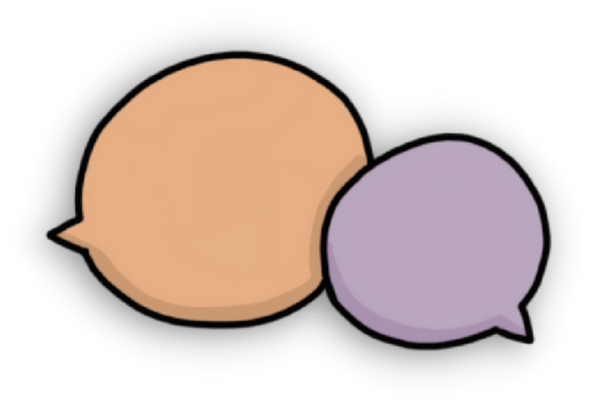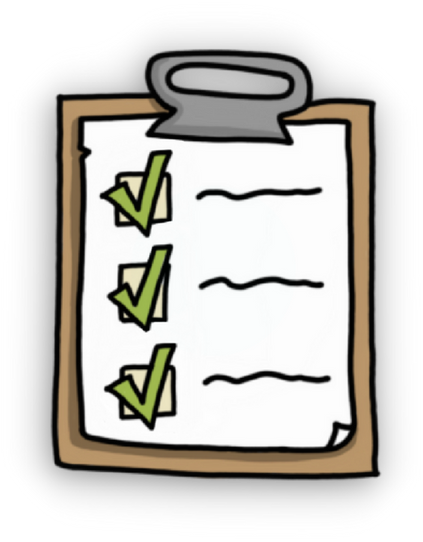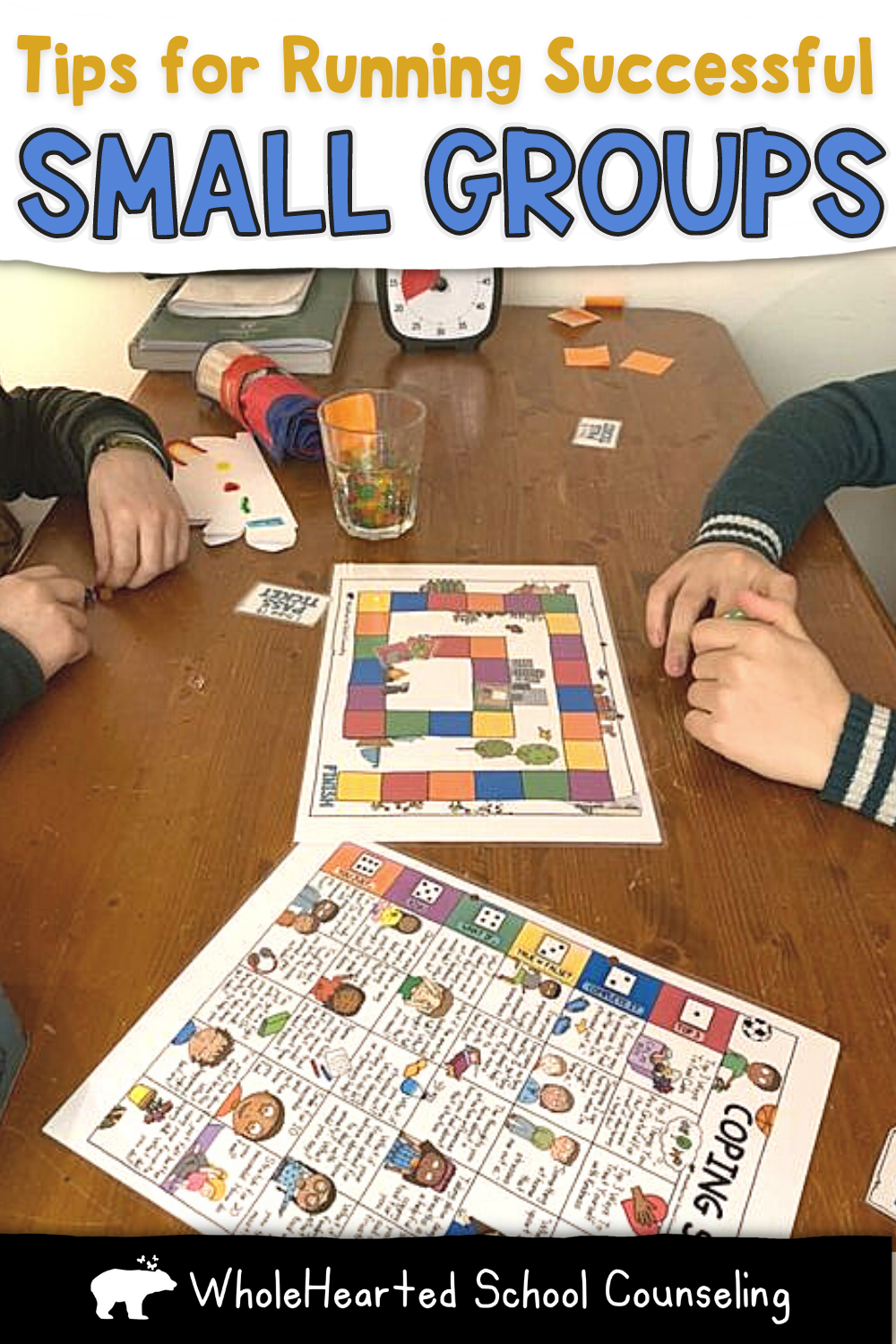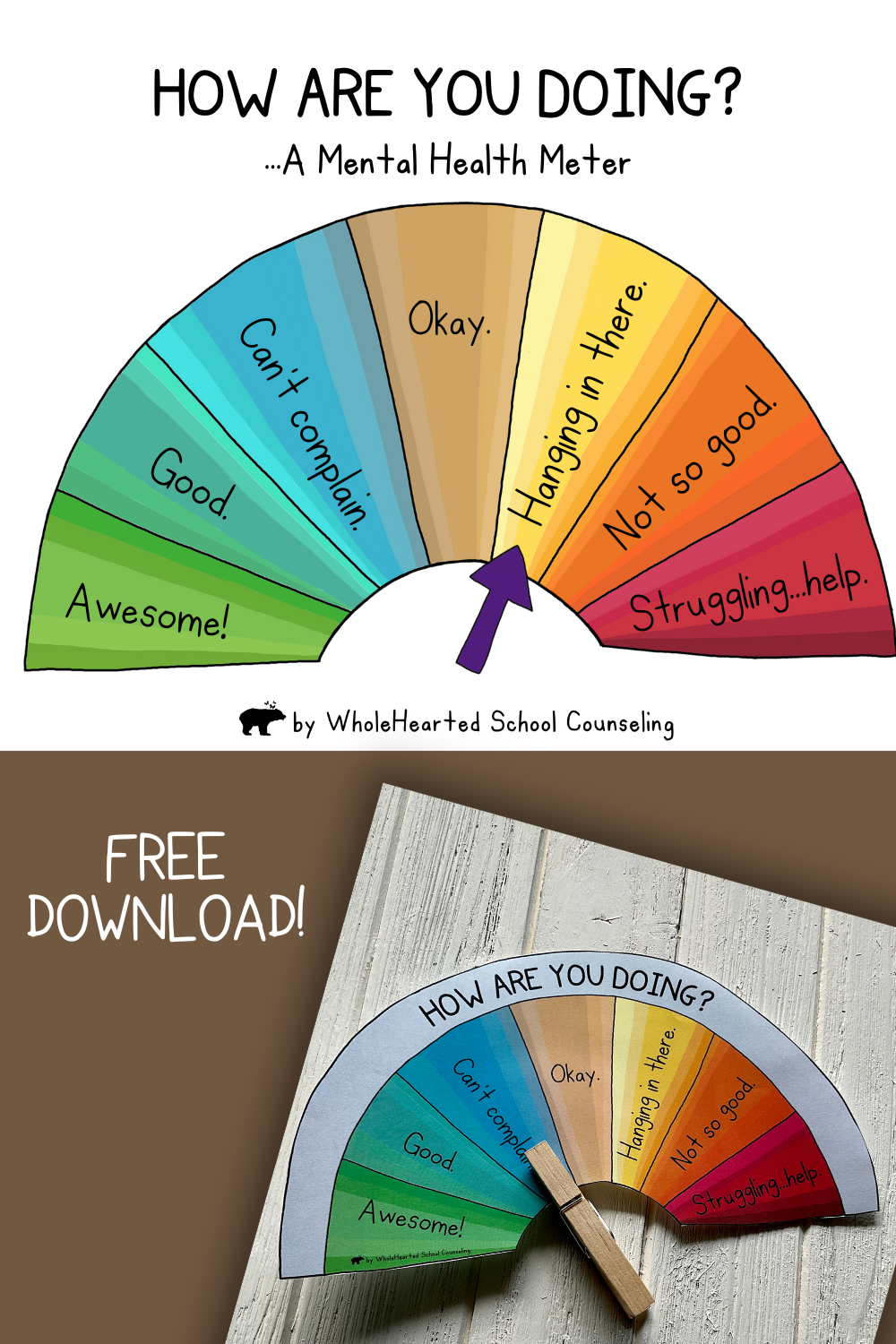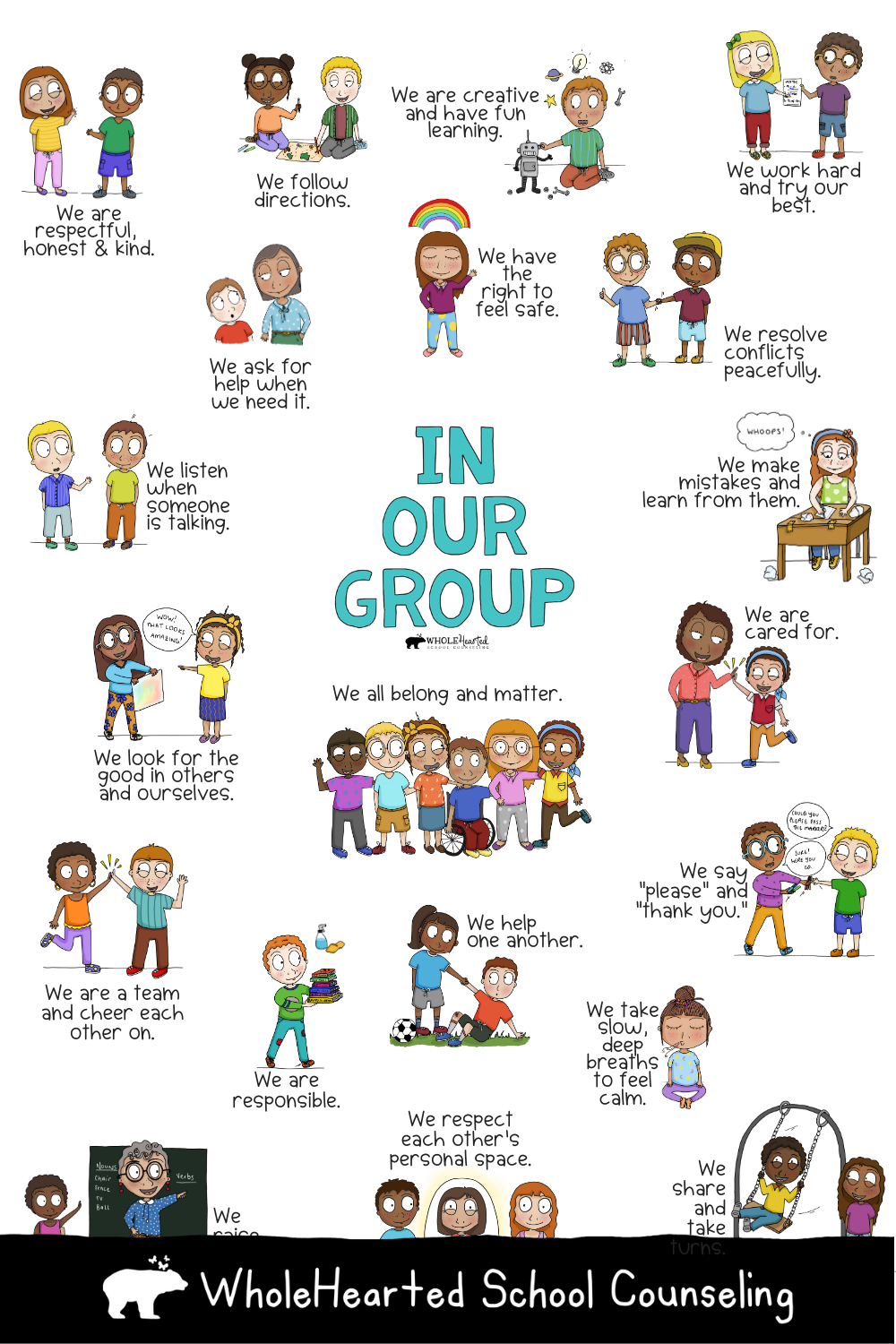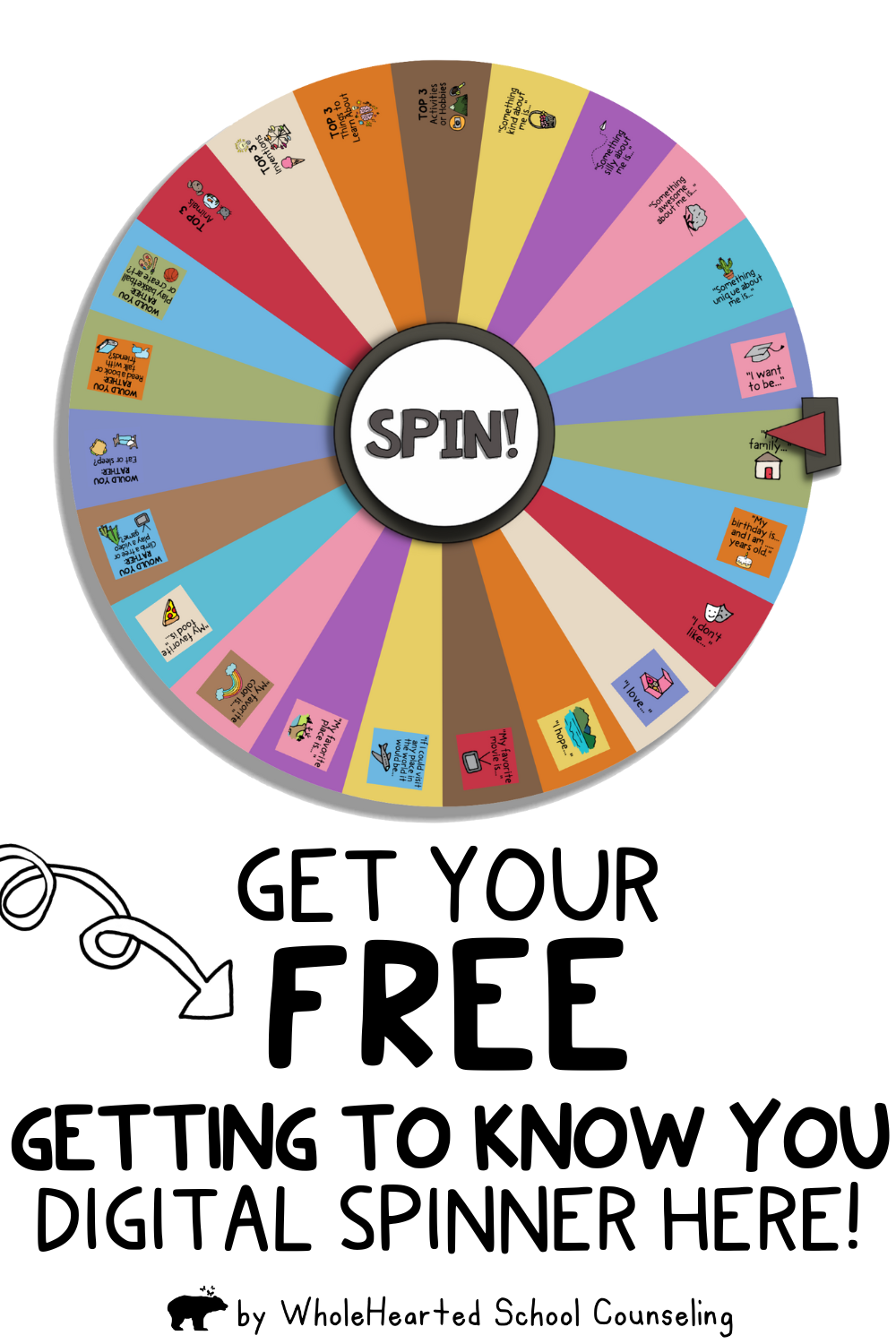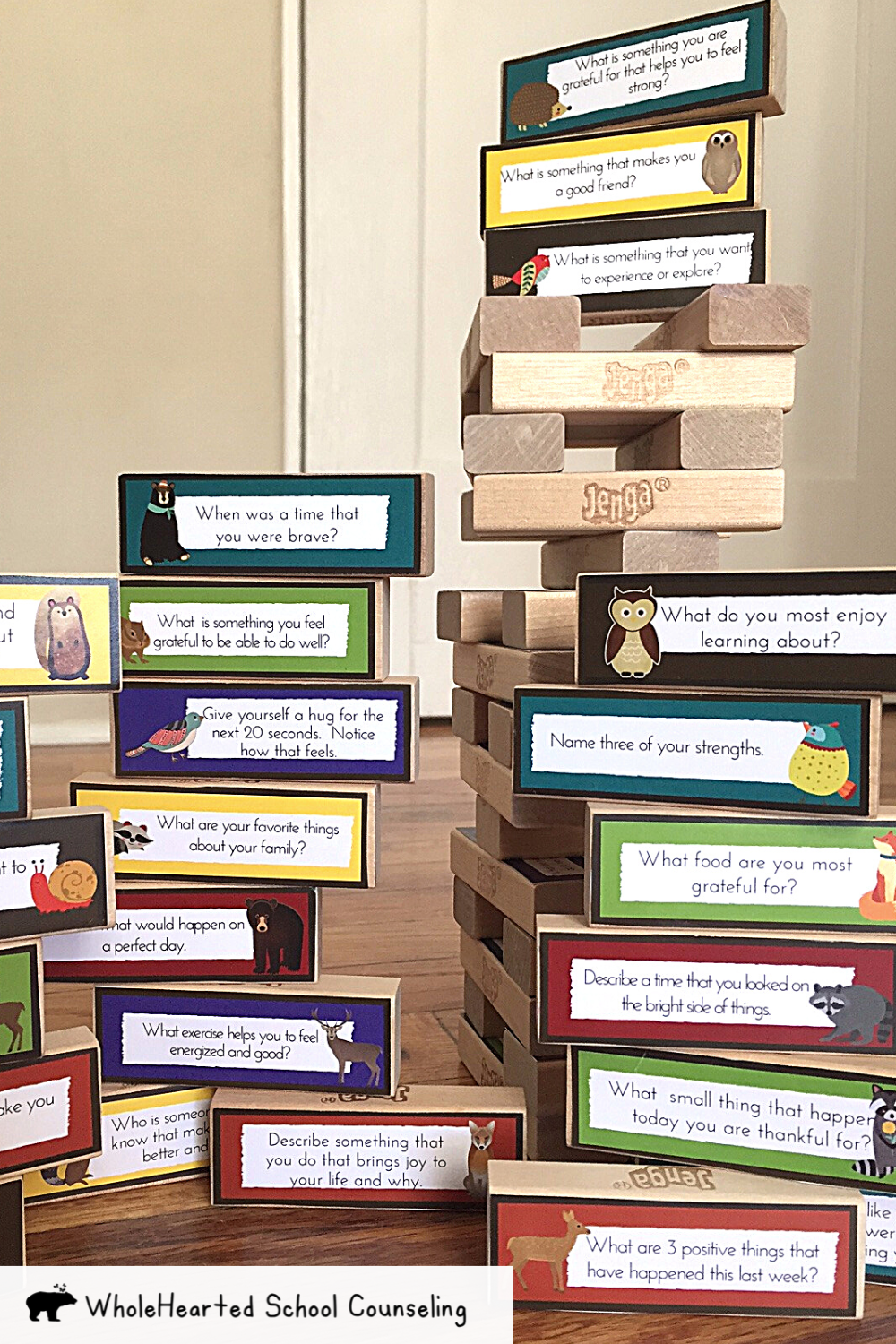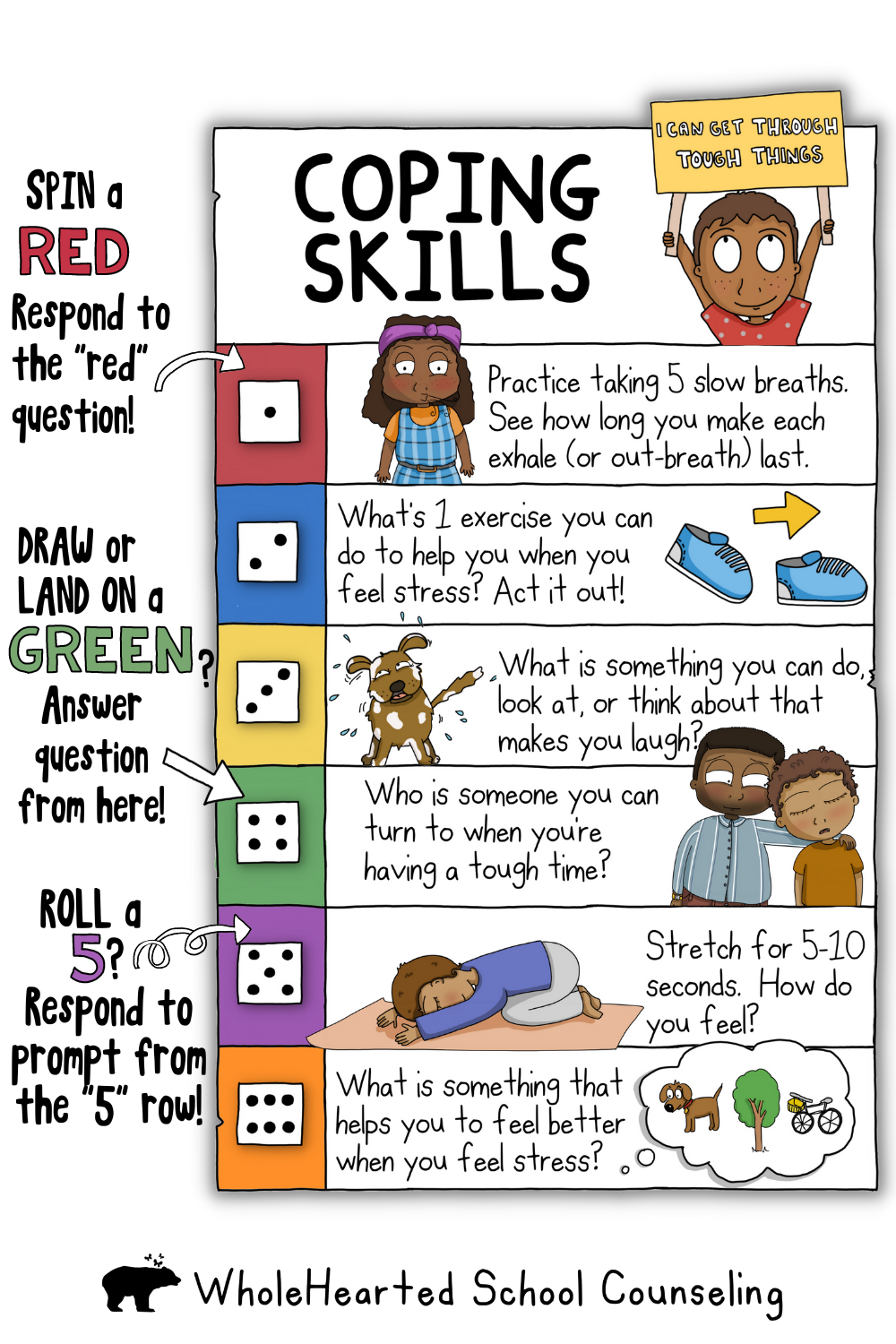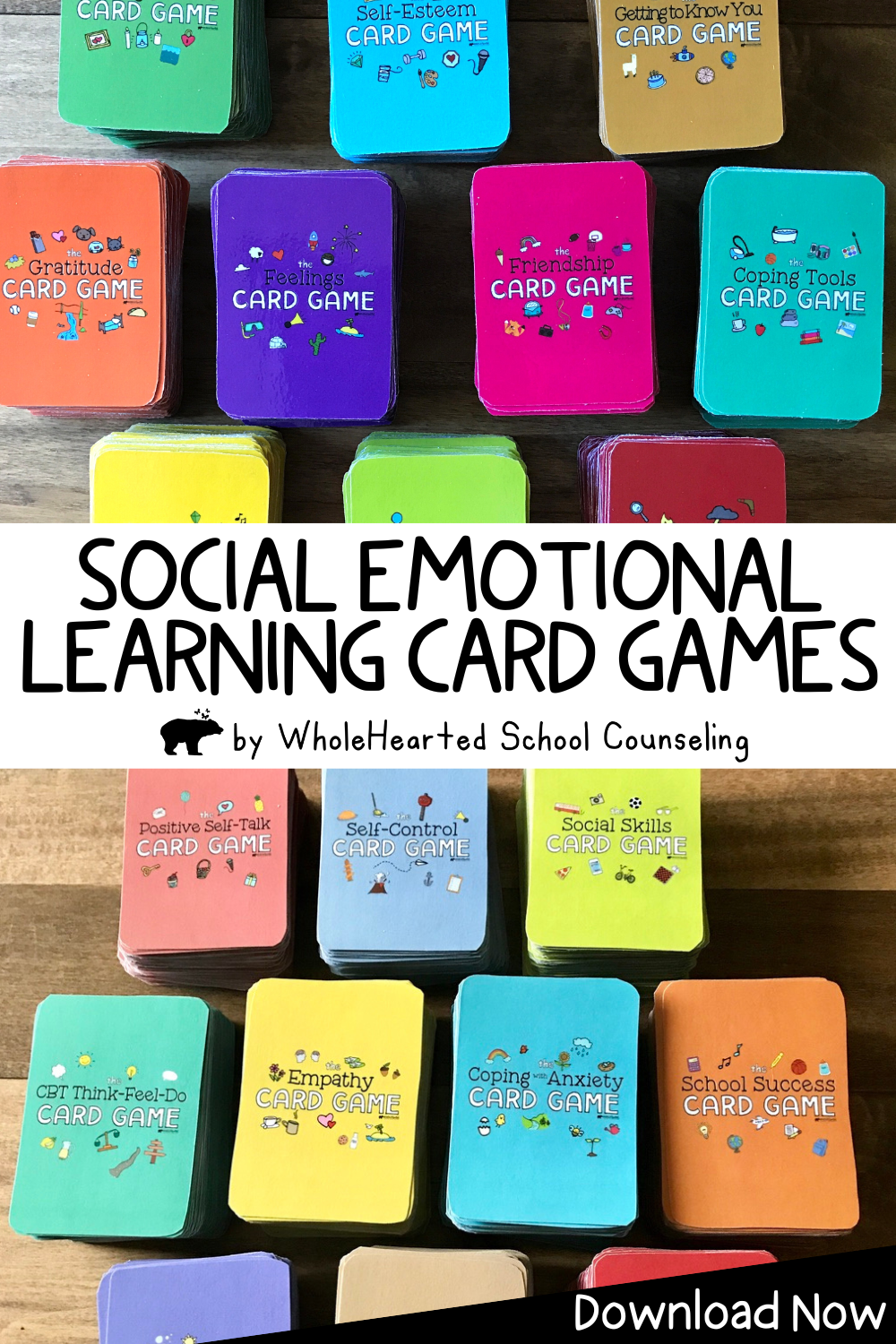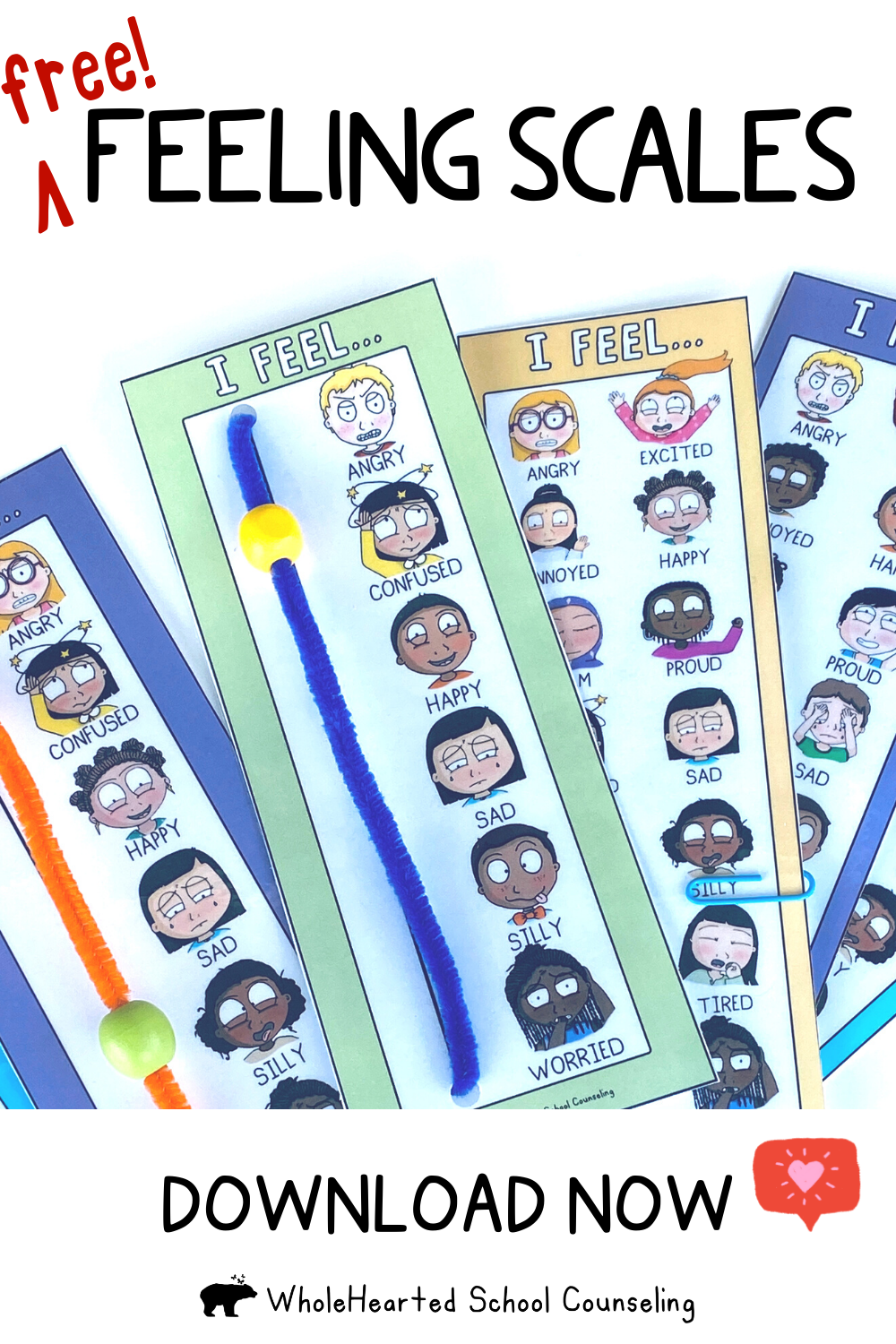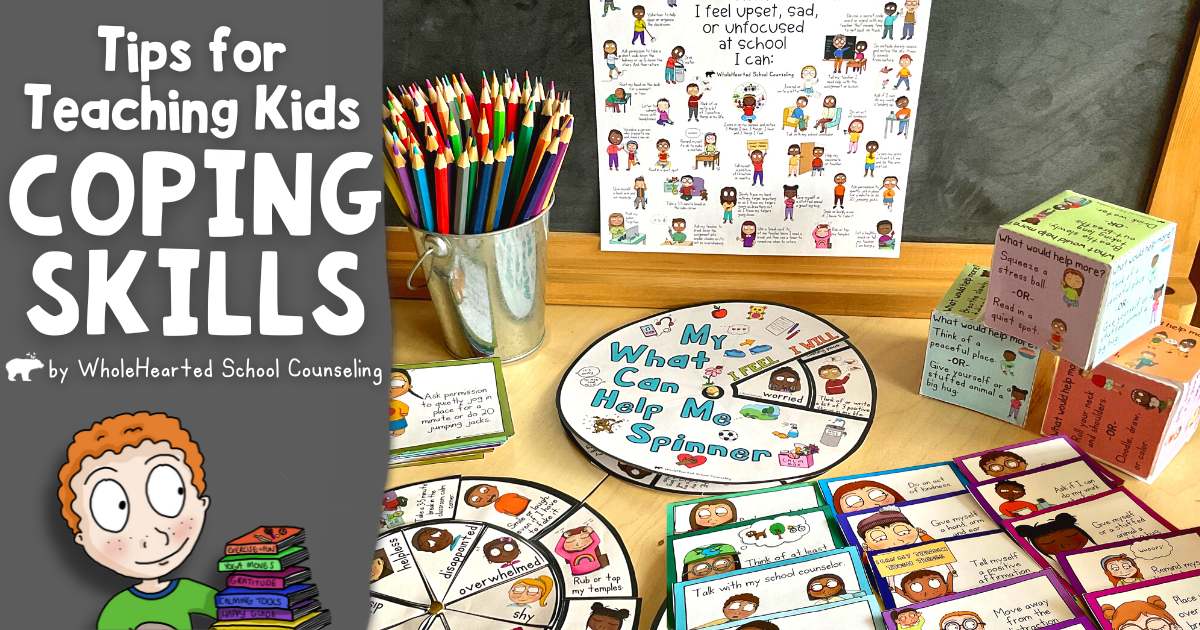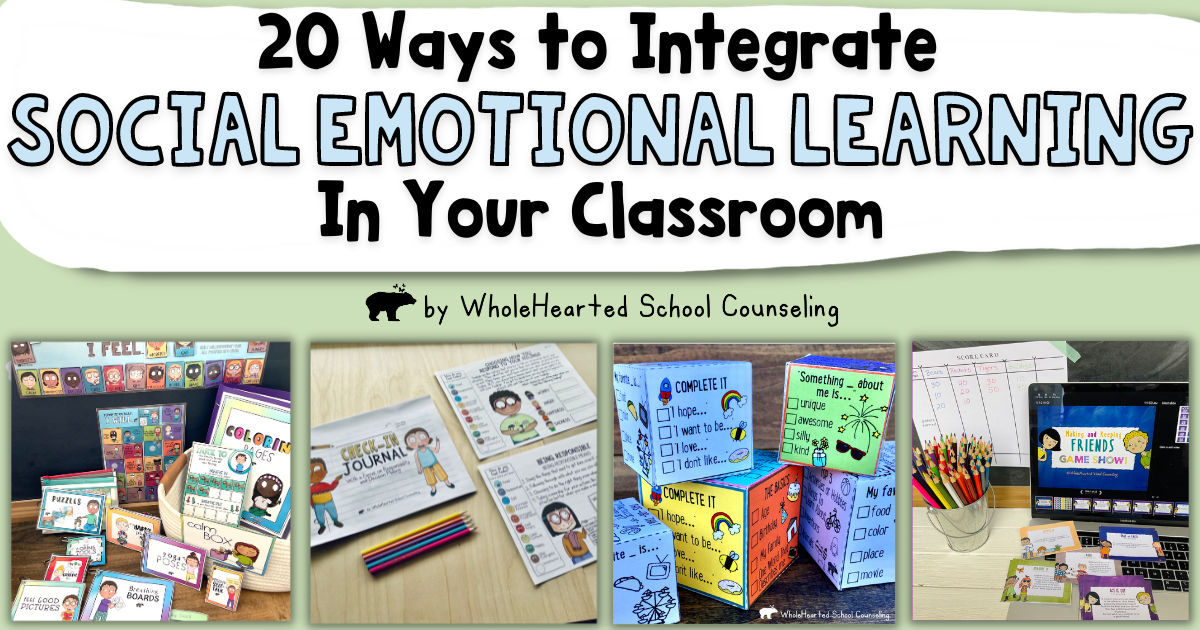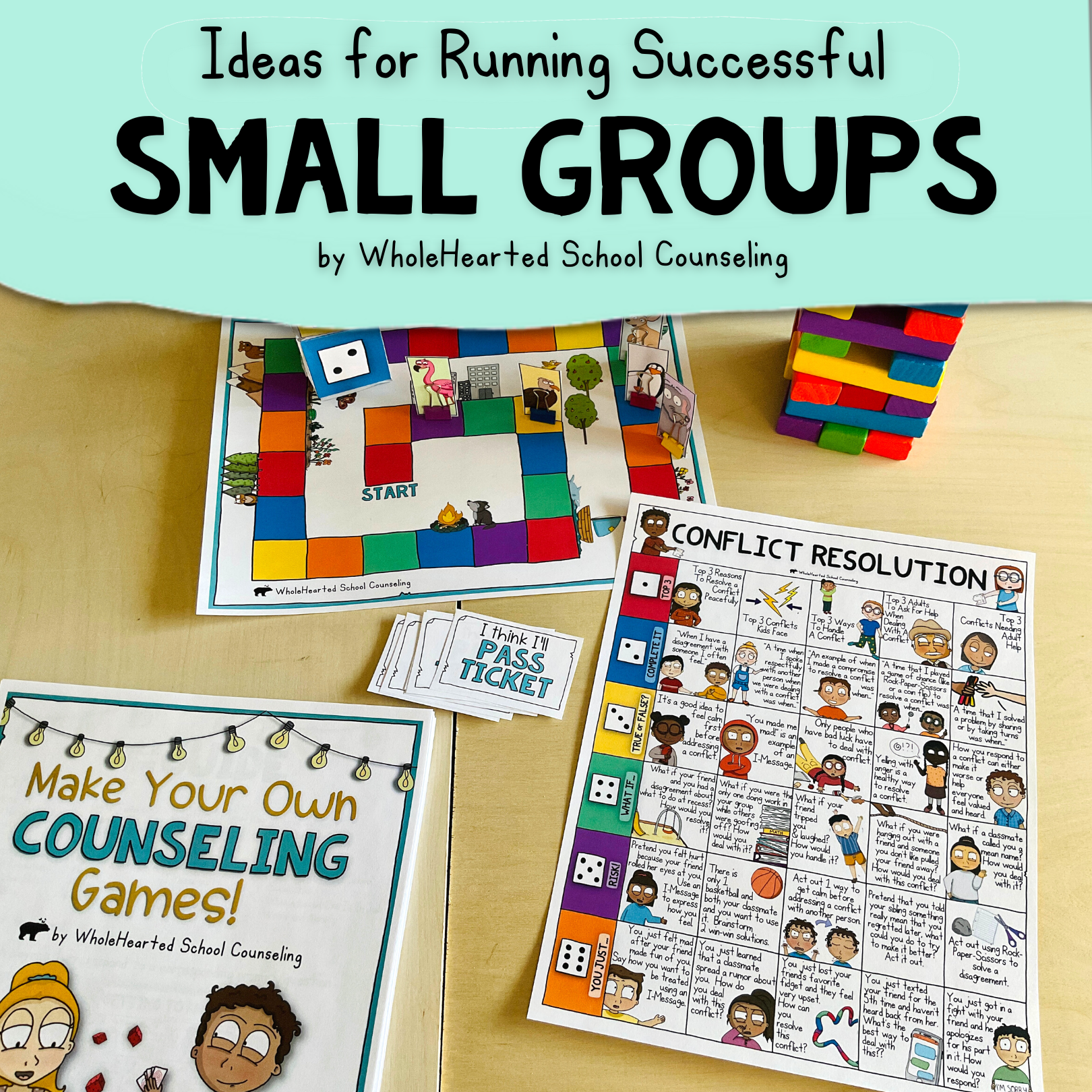
SOME EASY IDEAS TO MAKE YOUR SMALL GROUPS MORE EFFECTIVE
If you’re a school counselor, one of your super powers is to provide targeted behavior interventions for students. Two of the primary ways you deliver these interventions are either through individual counseling or small groups, right?
In some ways, working one on one with a student can seem easier to do. First, build rapport. Next, identify areas of concern. Then peel back the layers to build a solid intervention plan, while only needing to focus on one individual at a time.
But, when you are placing 4-5 students into a group together, it can become tricky to balance personalities, talk time, and manage areas of concern. After a little trial and error, and learning from some experts along the way, I’ve put together a few tips and tricks to help you come out on top with your small group counseling lessons.
Try implementing these 6 strategies to help your small group counseling feel more productive, fun, and successful.
1. Attend to Basic Needs, First
Using a pretest and a posttest is essential to understanding whether or not your small group counseling goals were successfully accomplished. Use a pre-test to your advantage by asking an added question that includes checking in on their emotional and physical well-being. If a student does not have their basic needs met or are not feeling safe, they will not be able to actively participate and gain the new knowledge presented in your small group.
You can ask two simple questions such as:
Do you feel safe and cared for at school? Yes or No
Do you feel safe and cared for at home? Yes or No
What to do if a student answers “No” to either of these questions?
Pull them prior to the start of your next group to determine what their needs are. Then, help them to resolve the issue, connect them with appropriate resources, or reach out to others in your building for support if needed.
You can also use this Free Mental Health Check In at the start of each small group counseling session. Using a paper clip or clothes pin, students can identify “How Are You Doing?” and allow you or the group members to respond and help. If they would like you to save it and pull them later for support, you can always do that too.
2. Set Clear Small Group Guidelines
Regardless of the data source or the topic area for your small group counseling lessons, each session you will have a unique set of personalities represented. You will have students in your group that have been in every class with each other since kindergarten. Or perhaps students that would never in a million years choose to sit next to each other. Conversely, students that are so close you can’t get them to stop giving each other high fives every time they talk.
For fidelity and function, the group needs to have its own unique set of guidelines. This step exists so that regardless of their current friendship status, all students can kindly participate in your small group counseling topics.
First have your own set of non-negotiables to gain buy-in.
Some examples of Group Rules can include:
We Follow Directions
We Listen When Someone is Talking
We Have the Right to Feel Safe
We Share and Take Turns
We Are a Team and Cheer Each Other On
Looking for a pre-made lesson & poster? Check out this Trauma Sensitive Classroom Rules & Expectations Poster for an interactive lesson to support building your group agreement. This resource also includes pre-made group expectations for the classroom, small group, or even at home.
Once you have determined a solid set of guidelines, have each student write their initials on the group counseling expectations. Hang it in a prominent place. Pull it out and review at the beginning of each counseling session as a reminder. When students start to get off track during your counseling small group session, use the guidelines to redirect and get them back, engaged, and on topic.
3. Use Relationship Building Activities, Every Session
Opening with a question is a quick and easy way to get your small groups rolling each session. If you have access to technology, this free Getting to Know You digital spinner is a fun and engaging way to randomly select a topic for discussion. If you need something more portable or tangible, print the dice and roll away. (These are fun to print and send home with your students for them to use at the dinner table at home, too!)
Other ideas include:
- Creating an intentional seating structure for your group. Start off in a circle, standing or sitting, where everyone can make eye contact, hear what is being said, and feel included.
- Make up a secret handshake for your group so when they come and go, or run into each other in the hallway, they can say hi without speaking.
- Have counselor made compliment cards ready to pass out to each student when they enter the space. Have them read the compliment aloud or to themselves and then write a complement to share with a group member.
- Teach coping skills, I- Feel statements, and how to effectively and respectfully disagree. This is important to allow honesty and openness in the group.
As your small group becomes more comfortable together, they will share information that will naturally help build connections, commonalities, and hopefully friendships.
4. Turn Any Game into a Counseling Game
Utilize the power of games. It relaxes the students, focuses their energy on fun, gives them familiarity, and allows for easy conversation. It also opens the door for on the spot interactive learning.
Jenga™ – turn each block into a question or scenario. You can use a permanent marker to write directly on the block or check out this example perfect for growth mindset, resilience, or gratitude.
UNO™ – Assign a feeling to each of the colors in the deck. Red- Anger, Blue – Sad, Green – Calm, Yellow – Happy, Wild – They Pick! Everytime a color is changed the student has to name a time they felt that way. Or name a coping strategy they use when they feel that emotion. Take notes to use as scenarios for future lessons or to create coping skills menus for students to take with them and hang in their lockers or on their refrigerators.
- Candy Land™ – Assign each fairytale character a scenario or question. For example: When you draw the gum drop, you also have to read and respond to the scenario or question. You could add in that they get to advance to the next purple space if they answer with honesty and try their best.
- SEL Card Games – It can sometimes be tricky to get middle and high school students engaged in learning new strategies or behaviors. However, these SEL card games are perfect to stretch their thinking and keep their attention. This bundle has 20 games for 20 different topics. Click here for this resource.
- Make Your OWN game – If you are looking to start from scratch and create your own game, this might be one of my favorite resources! It’s easy, it’s interactive, it’s engaging, and you learn SO MUCH about your students. Check out Make Your Own Counseling Game here (there’s a digital version, too!) This resource comes with several game board options, easy to assemble dice, directions, and questions for topics such as grief and loss, conflict resolution, attendance, anger, coping skills, and more!
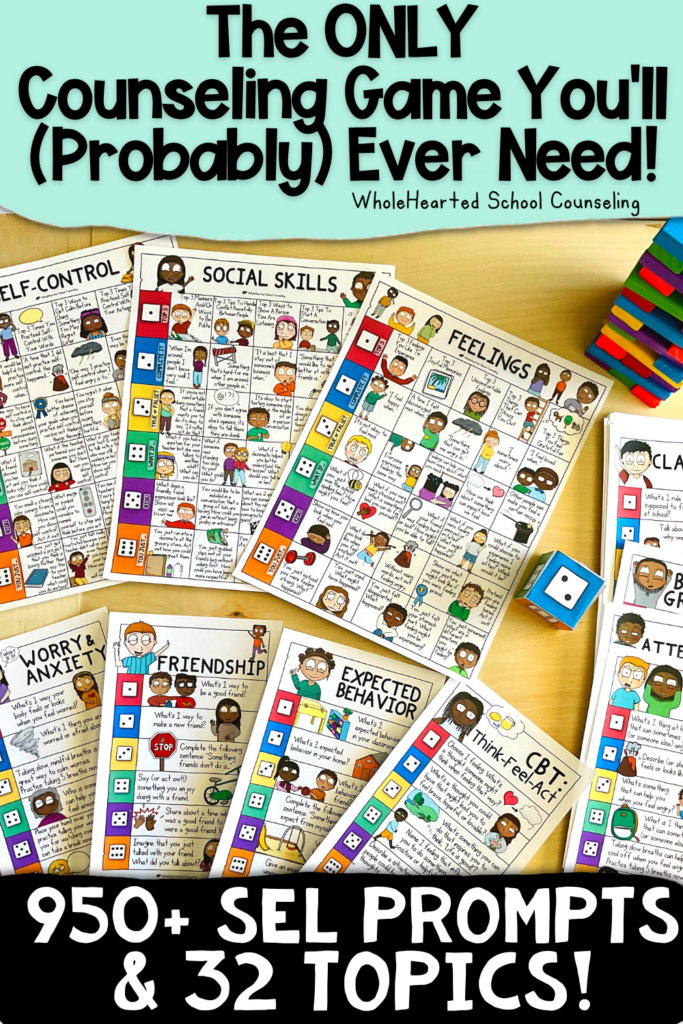
5. Make Feelings Part of Your Instruction
The more we talk about feelings, the easier it becomes to recognize them, respond to them, and self-regulate. One idea is to hang a feelings chart on your door and have students point to their feelings when they walk in the door. If you want to keep data on this, have students also write this in their group folders next to the date (or you could do it on a clipboard). You can also use the daily feeling to start conversation in your circle and build opportunities for compassion.
Another idea is to have index cards with a feelings picture or feelings word laid out on the table for when students walk in. Have each student select a card, keep it in their lap and talk about it when you do your opener. Using the cards, you could also have them select a feeling they are unsure what it means or how it feels. Use this to increase their feelings vocabulary and become more in tune with their body.
These Free Feelings Scales are also great for elementary small group counseling! They include pictures as well as words. Best of all, they are kinesthetic. Pass one out to each student as they enter the door and have them move the bead to the feeling when they walk in. Have them keep it at their work space and then select a feeling at the end of the lesson to compare. If they are laminated, you can have them put their names on the scale so you can document before/after feelings to use as data as well.
6. Stay Organized
There are several ways to get organized for a small group and have resources ready to use over and over. Here are my tried and true.
- Don’t wait until the last minute. Once your group topic is decided, find, create, print, make necessary copies, and laminate resources ASAP.
- Use hanging file folders. After you have found the resources and got them prepped, use hanging file folders to put all the materials. Binders are great too! Since many of the resources are loose items, having a folder is helpful to keep it all in one place and together for when you want to run a similar group in an upcoming session.
- Give each student their own folder to doodle, store papers, feelings charts, pre and posttests and keep notes. If you have space, create a procedure & location for how and where to grab and return these.
- Keep a Master Copy and a Counselor Notes Copy. Have one copy of your materials that you write notes on. This way, when you use this small group curriculum the next session, you have instructions and reminders right there. BUT make sure you have a clean master copy separate so you don’t have to find it in your One Drive and reprint.
Small Groups are the perfect time to really get to know the students in your building and create impactful learning opportunities. Have fun and know you are making a difference, one step at a time!


